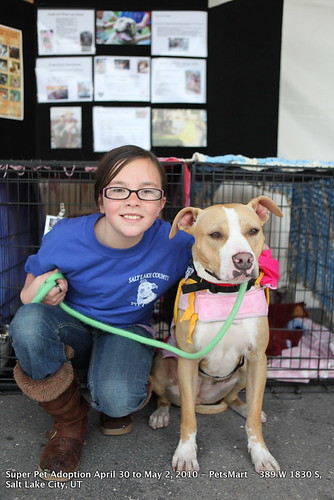Fun and Engaging Ways to Train Your Cat at Home
Interactive Playtime: Unleashing Your Cat’s Inner Hunter with Engaging Toys
As a cat owner, you undoubtedly want the best for your feline friend. Providing a stimulating environment filled with interactive toys not only promotes physical activity but also engages their minds. Cats, by nature, are curious and playful creatures that thrive on both physical exercise and mental challenges. In this blog post, we will explore various interactive toys that can stimulate your cat’s mind and encourage physical activity. From laser pointers to feather wands, we’ll uncover the essential interactive playtime tools that can help keep your furry friend healthy and happy!
Why Playtime is Crucial for Cats
Before we delve into the myriad of interactive toys, let’s first understand the importance of playtime for your cat.
- Physical Health: Regular play promotes exercise, which helps maintain a healthy weight and strengthen muscles.
- Mental Stimulation: Engaging activities can prevent boredom and reduce behavioral issues, such as scratching furniture or excessive meowing.
- Bonding Time: Interactive play encourages an emotional bond between you and your cat, fostering trust and companionship.
With these benefits in mind, let’s explore some exciting interactive toys!
1. Laser Pointers: The Classic Chase
One of the most entertaining and stimulating toys for cats is the classic laser pointer. Laser pointers provide an exciting chase for your cat, mimicking the movements of prey in the wild. You can point the laser around the room, allowing your cat to pounce, leap, and engage in playful hunting behavior.
Tips for Using Laser Pointers:
- Vary the Movements: Change up your pointing patterns—move the light in straight lines, zigzags, and circles to keep your cat engaged.
- Don’t Forget to Reward: After a fun round of chasing, it’s a good idea to reward your cat with a tangible treat or toy. This helps them understand that while the light can be exciting, there are tangible rewards that come from their efforts.
Safety Note:
Be cautious while using laser pointers. Never shine the laser directly into your cat’s eyes, and always provide a physical toy to catch at the end of the session.
2. Feather Wands: The Ultimate Teaser
Feather wands are a fantastic way to engage your cat’s hunting instincts. These toys often come with colorful feathers attached to a string or rod that you can wave around, simulating the movement of birds and other small creatures.
Benefits of Feather Wands:
- Interactive Play: Feather wands require your participation, allowing for shared playtime. This strengthens your bond with your cat.
- Physical Exercise: The act of jumping and swatting at the wand provides an excellent workout for your cat.
Pro Tip:
Try varying the style of your movements. Quick jerks and slow drags can keep your cat intrigued and actively engaged.
3. Puzzle Feeders: Engaging the Mind
Puzzle feeders are a wonderful option for intellectually stimulating your cat. These toys are designed to dispense treats or kibble when your cat figures out how to manipulate them. This mimics the experience of hunting and foraging in the wild.
Why Choose a Puzzle Feeder?
- Mental Stimulation: These feeders challenge your cat to think and strategize, thus enhancing their cognitive skills.
- Slower Eating: If you have a cat that tends to eat too quickly, puzzle feeders can encourage slower consumption, improving digestion.
Choosing the Right Puzzle Feeder:
Look for feeders with adjustable difficulty levels, so you can tailor the challenge as your cat learns.
4. Electronic Toys: The Future of Play
In our tech-savvy world, electronic toys have emerged as an innovative way to engage cats. These toys often move on their own, create sounds, or mimic prey, drawing your cat’s attention.
Popular Electronic Toy Options:
- Automatic Laser Toys: These devices project a laser dot that moves unpredictably, allowing your cat to chase it independently.
- Remote-Controlled Toys: Some electronic toys can be controlled from your smartphone, giving you the ability to engage your cat even when you’re not at home.
Takeaway:
While electronic toys provide great stimulation, always supervise your cat to prevent any potential hazards from small parts.
5. Ball and Track Toys: Instinctual Fun
Ball and track toys are another excellent option that encourages your cat to bat, chase, and pounce. These toys usually consist of a ball that moves within a track, allowing for endless entertainment.
Why Your Cat Will Love Them:
- Self-Play: Cats can engage with ball and track toys independently, making them a perfect solution for working cat parents.
- Reducing Boredom: These toys can keep your cat entertained, especially when you’re busy or away from home.
Conclusion: Time to Play!
Interactive playtime is vital for your cat’s physical and mental well-being. By incorporating a diverse range of toys such as laser pointers, feather wands, puzzle feeders, electronic toys, and ball-and-track sets, you can create a stimulating environment that nourishes your cat’s instincts and keeps them healthy.
Remember, playing with your cat is not just a chore—it’s an opportunity to bond and enrich their lives. So, grab some toys and get ready for a fun session!

Positive Reinforcement: Treats and Praise for Successful Cat Training
When it comes to training your cat, using positive reinforcement such as treats and praise can be an effective strategy. This method emphasizes encouraging desired behaviors instead of punishing undesired ones, making it a more humane and enjoyable experience for both you and your furry friend. Understanding the nuances of positive reinforcement can help to transform your cat’s behavior and enhance your relationship. Let’s explore how to implement this technique effectively.
Understanding Positive Reinforcement
Positive reinforcement involves giving your cat a reward immediately after they exhibit a desired behavior. This reward can come in various forms, including:
- Treats: Small, tasty snacks that your cat loves.
- Praise: Verbal encouragement or affectionate petting.
- Playtime: Engaging your cat in their favorite activity right after they perform the desired action.
The key is to deliver these rewards promptly so your cat makes a clear connection between their action and the reward. For example, if your cat sits on command and receives a treat immediately, they’re more likely to repeat the behavior.
The Importance of Consistency
Consistency is vital in any training program. To ensure your cat learns effectively, follow these tips:
- Use the Same Commands: Always use the same words or phrases for specific behaviors to help your cat understand what you expect.
- Reward Immediately: Offer treats or praise right after your cat performs the desired action. This immediate reinforcement reinforces the connection.
- Set a Schedule: Train your cat at roughly the same times each day. This predictability can make your cat more receptive to learning.
Be Patient: Change Takes Time
Patience is crucial when training your cat. Unlike dogs, cats often train at their own pace. Here are a few considerations to keep in mind:
- Short Sessions: Keep training sessions brief—about 5-10 minutes. Cats have short attention spans, so multiple short sessions can be more effective than one long session.
- Recognize Individual Differences: Each cat has its personality. Some may pick up on commands quickly while others may take longer. Adjust your training approach based on your cat’s unique temperament.
- Stay Calm and Positive: Training can be frustrating at times, but maintaining a calm demeanor encourages your cat to stay engaged. If they sense your frustration, they may become less willing to participate.
How to Effectively Reward Desired Behaviors
The success of positive reinforcement training relies on effectively rewarding your cat. Here are some actionable tips:
- Choose High-Value Treats: Use small, appealing treats that your cat loves. Experiment with different flavors and types to find what works best.
- Use Variety: To keep your cat engaged, vary the treats and forms of praise. For instance, mix treats with a bit of play or extra petting to keep things exciting.
- Gradually Phase Out Treats: Once your cat consistently performs the desired behavior, gradually reduce the frequency of treats. Continue the verbal praise or petting to maintain reinforcement without making treats the primary motivation.
Real-World Example: Litter Box Training
One of the most common areas where positive reinforcement can be effective is litter box training. Here’s how to approach it:
- Establish the Litter Box: Ensure the box is cleaned regularly and placed in a quiet, accessible area.
- Reward Immediately: As soon as your cat uses the litter box, offer a treat and praise them enthusiastically. This helps them associate the litter box with positive outcomes.
- Be Patient: If your cat has accidents, do not scold them. Instead, clean the area thoroughly and continue rewarding successful use of the litter box.
Conclusion: Building a Positive Relationship
Utilizing positive reinforcement to train your cat can foster not only better behavior but also a stronger bond with your feline companion. Remember to maintain consistency, be patient, and offer effective rewards to encourage desired behaviors.

Clicker Training: Effective Communication with Your Cat
While interactive playtime is crucial for your cat’s happiness and health, training and communication are equally important. One proven method to enhance your training sessions is through clicker training. This technique provides a structured way to communicate with your feline friend, allowing them to learn new behaviors in a positive and engaging manner.
What is Clicker Training?
Clicker training is a form of positive reinforcement that uses a small handheld device called a clicker to mark desired behaviors. When your cat performs the desired behavior, you “click” the device, immediately followed by a reward made up of a treat or praise. This helps your cat associate the sound of the click with good behavior, thereby reinforcing it.
Why Use Clicker Training for Your Cat?
- Clear Communication: The distinct sound of the clicker provides a clear signal to your cat, making it easy for them to understand which behavior is being rewarded.
- Faster Learning: Research has shown that animals learn quicker when they receive immediate feedback. The sound of the click captures their attention, making them more eager to repeat the behavior.
- Building a Bond: Clicker training enhances the bond between you and your cat. When they understand that their actions lead to positive outcomes, it fosters trust and strengthens your relationship.
- Versatility: Clicker training is effective for teaching a variety of commands and tricks, from basic commands like “sit” to more complex behaviors.
Getting Started with Clicker Training
Before you embark on your clicker training journey, here’s how to get started effectively:
Step 1: Gather Your Tools
You’ll need just a few items to begin:
- A Clicker: An inexpensive tool that can be found in pet stores or online.
- Tasty Treats: Choose small, high-value treats that your cat really loves. Soft, smelly treats often work best.
Step 2: Introduce the Clicker
Before you start teaching commands, let your cat become familiar with the clicker. Click the device and immediately give your cat a treat. Repeat this a few times until they associate the sound with a reward.
Step 3: Choose a Simple Command
Start with a simple command like “sit.” Here’s how to do it:
- Get your cat’s attention: Hold a treat just above their nose and slowly move it upward. This should cause them to look up and sit naturally.
- Click when they sit: As soon as their bottom touches the ground, click the clicker.
- Reward promptly: Follow the click with a treat to reinforce the behavior.
Step 4: Practice Consistently
Repeat the process multiple times in short sessions (about 5-10 minutes) a few times a day. Cats have short attention spans, so keeping the sessions brief will help maintain their interest.
Step 5: Gradually Fade Out the Treats
As your cat becomes more familiar with the command, you can start to reduce the frequency of treats. Continue to click for successful attempts but reward with treats intermittently. This helps maintain their interest without becoming reliant on constant rewards.
Often Encountered Challenges
When using clicker training, you may encounter a few challenges. Here are some tips to overcome them:
- Distractions: Ensure the training area is free from loud noises and other distractions that could divert your cat’s attention.
- Lack of Interest: If your cat seems uninterested in treats, try different kinds of rewards or engage them during playtime to stimulate their excitement.
Quick Tips for Successful Clicker Training
- Be patient: Learning takes time. Do not rush the process, and be prepared for some setbacks.
- Keep training sessions fun: Always end on a positive note, regardless of whether the cat successfully completes the command.
- Use a relaxed and friendly tone when speaking to your cat; this helps create a positive atmosphere.
Conclusion: A Rewarding Experience!
Clicker training offers an effective means of communicating with your cat while teaching them beneficial commands and behaviors. By incorporating this training method into your routine, you will likely find that your cat becomes more responsive, engaged, and trusting.

Basic Commands: Teaching Your Cat Essential Skills for Better Behavior
Teaching your cat basic commands can significantly enhance communication between you and your feline friend. It fosters a deeper bond, improves obedience, and creates a more harmonious home environment. Here, we’ll explore fundamental commands that can be taught to cats, like ‘sit’, ‘stay’, and ‘come’, along with the step-by-step instructions for each command.
Teaching ‘Sit’: The Foundation of Training
- Get Prepared: Gather some of your cat’s favorite treats. Ensure you’re in a quiet space with minimal distractions.
- Get Your Cat’s Attention: Hold a treat close to the cat’s nose, allowing them to sniff it.
- Move the Treat Up: Slowly move the treat above and slightly behind your cat’s head. As your cat looks up to follow the treat, their bottom will naturally lower to the ground.
- Say the Command: As soon as your cat’s back end hits the floor, clearly say the command ‘sit’.
- Reward Immediately: Once they are in the sitting position, reward them immediately with the treat and lots of praise.
- Repeat: Practice several times in short sessions (5-10 minutes). Consistency is key, so try to reinforce the behavior daily.
- Fade the Treat: As your cat learns, begin to fade out the treats, rewarding them intermittently while still using verbal praise.
Teaching ‘Stay’: Building Patience
- Start With ‘Sit’: Ensure your cat can sit reliably before introducing ‘stay’.
- Prepare Your Command: Have a treat ready and say ‘sit’ to get your cat in position.
- Introduce ‘Stay’: Once they sit, hold your hand out in front of them, palm facing forward, and say ‘stay’ calmly.
- Take a Step Back: Step back a short distance (1-2 feet) while keeping your eyes on your cat.
- Reward for Staying: If your cat stays in place, immediately return and reward with a treat and praise. If they move, gently guide them back and try again.
- Gradually Increase Distance: As your cat becomes more comfortable, increase the distance and time you ask them to stay.
- Practice in Different Areas: Practice the command in various locations to generalize the behavior.
Teaching ‘Come’: Strengthening Recall
- Choose a Name or Command: Decide on a consistent word or phrase, such as ‘come’ or the cat’s name, to use for this command.
- Start in a Quiet Environment: Use an area with few distractions.
- Get Your Cat’s Attention: Either call your cat or use a treat to lure them towards you.
- Say the Command: As they come closer, say ‘come’ in a cheerful tone.
- Reward Upon Arrival: When your cat arrives at your location, reward them immediately with a treat and loving words.
- Make it Fun: Consider incorporating play or movement. For example, kneel down or back away a few steps as you call them, making yourself more inviting.
- Increase Difficulty: As your cat gets the hang of it, increase the distance between you or add distractions while practicing.
General Training Tips
- Keep It Positive: Always use positive reinforcement to encourage good behavior. Harsh penalties or negative reinforcement can lead to fear or distrust.
- Short Sessions are Best: Cats have shorter attention spans than dogs. Keep training sessions short (5-10 minutes) and fun to maintain their interest.
- Be Patient: Every cat learns at their own pace. Patience is key; it’s essential not to rush the process.
- Consistency is Crucial: Ensure that all family members use the same commands and training methods, so your cat receives consistent messages.
- Regular Practice: Incorporate the commands into your daily routine to reinforce learning and improve reliability.
Implementing these basic commands can create a more disciplined and connected home environment for you and your cat. Engaging your cat with training adds valuable mental stimulation and can even help to curb unwanted behaviors.

Harness Training: Introducing Your Cat to Outdoor Adventures
As cat owners, we often envision idyllic strolls with our feline companions, soaking in the fresh air as they explore the great outdoors safely. To make this a reality, harness training is an essential step that opens the door to outdoor adventures. In this section, we will detail the process of training your cat to wear a harness, introducing techniques that will help acclimate them gradually and comfortably.
Why Harness Training is Beneficial for Cats
Before we dive into the how-to, let’s explore the benefits of harness training for your cat:
- Safety First: A harness provides a secure way to allow your cat outside without the risk of them running away or getting lost. It gives you peace of mind while letting your pet explore their surroundings.
- Outdoor Exploration: Cats can benefit immensely from stimulation outside their typical indoor environment. Harness walks allow them to see new sights, hear different sounds, and enjoy the scents of nature.
- Exercise and Enrichment: Just like interactive playtime, outdoor walks encourage physical exercise and mental enrichment—keeping your feline fit and happy.
With these advantages in mind, let’s move on to the steps you’ll need to introduce a harness effectively.
Choosing the Right Harness
The first step in harness training is to select a suitable harness for your cat. Not all harnesses are created equal!
- Type of Harness: Look for a harness specifically designed for cats, such as the H-style or vest-style harnesses. These designs help distribute pressure evenly and prevent escape.
- Size Matters: Ensure the harness fits your cat snugly but comfortably. You should be able to fit two fingers between the harness and your cat’s body.
- Safety Features: Opt for a harness that includes reflective strips or bright colors for visibility, especially if you plan on walking in low-light conditions.
Step-by-Step Guide to Harness Training
- Familiarization with the Harness:
- Presentation: Start by allowing your cat to sniff and explore the harness. Leave it near their favorite resting spot so they can grow accustomed to its presence.
- Positive Reinforcement: Pair this introduction with treats and praise to create a positive association.
- Wearing the Harness Indoors:
- First Fit: When your cat seems comfortable, gently slip the harness on without fastening it. Let them experience the sensation for a few minutes.
- Short Sessions: Gradually increase the time they wear it while engaging in play or providing treats. Aim for 5-10 minute sessions to start.
- Securing the Harness:
- Once your cat is accustomed to the feel of the harness, fasten it securely. Monitor their body language—if they appear uneasy, remove it and try again later.
- Get Moving: Encourage your cat to move around by gently coaxing them with treats or toys.
- Introducing the Leash:
- After your cat is comfortable wearing the harness, attach the leash while indoors. Let them drag it for a short time, getting used to the sensation.
- Controlled Exploration: Gradually start guiding your cat while indoors, using treats and praise to maintain their positive experience.
- First Outdoor Adventure:
- Choose a Safe Environment: Begin in a quiet, enclosed area like your backyard or a park. Avoid crowded areas until your cat is fully acclimated.
- Short Walks: Start with brief walks, and pay attention to your cat’s comfort level. If they show signs of stress, such as flattening their ears or hiding, halt the session and try again later.
Final Adjustments and Tips
- Patience is Key: Every cat is different. Some may adapt quickly, while others take time. Be patient and follow their lead.
- Consistent Training: Make harness training a regular part of your routine. Frequent, short sessions help reinforce positive behavior.
- Monitor Their Behavior: If your cat appears to be distressed, go back a step in the training process. It’s crucial that your cat associates the harness with good experiences.
Conclusion: Ready for Adventure!
Harness training can be a fantastic way to enrich your cat’s life, allowing them to explore outdoor spaces safely. By following these steps and maintaining a positive, patient approach, you’re setting the stage for enjoyable outdoor adventures with your beloved feline.

Litter Box Training: Ensuring Your Cat Uses the Litter Box Consistently
As a caring cat owner, part of creating a happy and healthy environment for your feline friend involves effective litter box training. Cats are generally instinctive litter box users, but sometimes they need a bit of guidance to ensure consistency. In this blog post, we’ll explore effective methods for litter box training, tips for maintaining a clean litter box, and best practices for introducing a new cat to it.
Understanding Your Cat’s Litter Box Needs
Before diving into effective training methods, it’s important to understand why some cats may shy away from using the litter box. Here are a few common reasons:
- Litter Type: Some cats are particular about the texture or smell of their litter.
- Box Location: If the litter box is in a high-traffic area or too close to their food, they may avoid it.
- Cleanliness: Cats are clean animals and prefer a tidy environment. A dirty litter box can lead to avoidance.
Recognizing these factors can guide your training approach effectively.
Litter Box Training: Ensuring Your Cat Uses the Litter Box Consistently
As a caring cat owner, part of creating a happy and healthy environment for your feline friend involves effective litter box training. Cats are generally instinctive litter box users, but sometimes they need a bit of guidance to ensure consistency. In this blog post, we’ll explore effective methods for litter box training, tips for maintaining a clean litter box, and best practices for introducing a new cat to it.
Understanding Your Cat’s Litter Box Needs
Before diving into effective training methods, it’s important to understand why some cats may shy away from using the litter box. Here are a few common reasons:
- Litter Type: Some cats are particular about the texture or smell of their litter.
- Box Location: If the litter box is in a high-traffic area or too close to their food, they may avoid it.
- Cleanliness: Cats are clean animals and prefer a tidy environment. A dirty litter box can lead to avoidance.
Recognizing these factors can guide your training approach effectively.
Effective Litter Box Training Methods
Training your cat to use the litter box consistently can be a straightforward process with the right strategies. Here are a few effective methods to consider:
- Choose the Right Litter Box:
- Size Matters: Ensure the litter box is large enough for your cat to enter, turn around, and dig comfortably.
- Open vs. Covered: Some cats prefer open boxes for easy access, while others may feel secure in a covered box. Observe your cat’s preferences.
- Select the Right Litter:
- Experiment: Try out different types of litter (clumping, non-clumping, crystal, etc.) to see what your cat prefers.
- Avoid Strong Scents: Choose unscented litter as strong fragrances may deter your cat from using the box.
- Establish a Routine:
- Frequent Visits: Initially, guide your cat to the litter box after meals, playtime, or naps. These are times when they might feel the urge to go.
- Consistency: Maintain a consistent routine to help your cat associate these times with using the litter box.
- Positive Reinforcement:
- Reward Success: When your cat uses the litter box correctly, offer praise or a small treat. This reinforces the desired behavior.
- Avoid Punishment: If accidents occur, do not scold your cat. Instead, clean up calmly and learn from the mistake.
- Monitor for Medical Issues:
- Sign of Distress: If your cat suddenly begins to avoid the litter box, consult with a veterinarian. There may be underlying health issues that need addressing.
Maintaining a Clean Litter Box
Keeping the litter box clean is crucial for encouraging continued use. Here are some essential maintenance tips:
- Daily Cleaning:
- Scoop out waste daily to keep the litter fresh and reduce odors.
- Weekly Deep Clean:
- Thoroughly wash the litter box with mild soap and water every week. Rinse it well to avoid any residue which may deter your cat.
- Litter Replacement:
- Replace the litter entirely once a month or as needed. Cats are more likely to use a box with fresh litter.
- Multiple Boxes:
- If you have multiple cats, provide one box per cat plus one extra. This helps prevent territorial disputes.
Introducing a New Cat to the Litter Box
If you’re welcoming a new cat into your home, it’s important to introduce them to the litter box correctly. Here’s how:
- Create a Safe Space:
- Allow your new cat to acclimate to their new environment before introducing the litter box. Provide a cozy space where they feel secure.
- Show Them the Box:
- After a few days, guide your new cat to the litter box. Gentle encouragement can help them understand that it’s their designated area.
- Provide Choice:
- If you have different types of litter boxes, let your new cat try out each box. Cats can be picky, and giving them options may be helpful.
- Be Patient:
- It may take time for your new cat to feel comfortable using the litter box in a new environment. Be patient and continue to reinforce positive behavior.
- Monitor Behavior:
- Pay attention to how your new cat interacts with the litter box. If they seem hesitant, revisit litter preferences and box locations to accommodate their needs.
Conclusion: Happy Litter Box Training!
Constructing a positive litter box experience is pivotal for both you and your cat. With the right methods, a clean environment, and patience, you can ensure that your furry friend feels comfortable using their litter box consistently.

Target Training: Teaching Your Cat to Touch a Target
Once you’ve provided your cat with stimulating interactive playtime, it’s time to elevate their training skills. One effective method to enhance your cat’s behavior and bond further with them is through target training. This technique not only allows you to teach your cat essential commands but can also be adapted for more intricate training tasks. Let’s explore what target training is, how to teach it, and its multiple applications.
What is Target Training?
Target training involves teaching your cat to touch a specific object, usually a target stick or your hand, with their nose or paw. This simple yet powerful behavior can serve as a foundation for more advanced techniques. Cats are naturally curious and responsive to visual cues, making target training an excellent avenue for training sessions.
How to Teach Target Training
Follow these step-by-step instructions to successfully teach your cat to target:
- Choose Your Target: Select a target stick or simply use your hand. This object should be easily visible and distinguishable for your cat.
- Find a Quiet Space: Ensure you practice in a distraction-free environment where your cat can focus on the training.
- Get the Right Treats: Prepare your cat’s favorite treats—small, soft snacks are ideal. These will act as positive reinforcements.
- Introduce the Target: Hold the target close to your cat’s face. When they touch it with their nose or paw, immediately reward them with a treat and verbal praise. This creates a positive association with the target.
- Repetition and Practice:
- Repeat the process several times to reinforce the behavior.
- Gradually increase the distance between the target and your cat. This helps them understand that targeting is the goal, regardless of where the target is placed.
- Add a Cue: Once your cat consistently targets the object, introduce a verbal cue such as “touch” or “target.” Use the cue just before presenting the target so your cat learns to associate the sound with the action.
- Practice and Patience: Regular short sessions (5-10 minutes) work best. Always end on a positive note to keep your cat enthusiastic about training.
Applications of Target Training
Target training can be a gateway to a variety of training applications. Here are some ways you can build on your cat’s targeting skills:
- Basic Commands: Once your cat reliably targets, you can teach them basic commands such as sit, stay, or come. Use the target to motivate your cat to move into desired positions or locations.
- Trick Training: Want to teach your cat to jump through a hoop or fetch? Use target training to guide them through the motions step-by-step.
- Veterinary Visits: If your cat struggles with vet visits, target training can be helpful. You can teach your cat to move to a carrier or specific spot on command, making trips less stressful for both of you.
- Behavior Modification: Target training is an effective method for redirecting unwanted behaviors. For instance, if your cat tends to scratch furniture, you can train them to touch a designated scratching post instead.
- Enhancing Bonding: The training sessions offer quality time and strengthen your relationship. Engaging with your cat positively will drive home the ideas of trust and understanding, making your bond even stronger.
Conclusion: Target Training Success
Target training is a versatile and engaging method for enhancing your cat’s skill set while strengthening the bond between you and your feline companion. This technique not only fosters mental stimulation but also lays the groundwork for further training in various areas.
So, grab some treats and a target, and start this exciting journey with your cat today!

Agility Training: Setting Up a Fun Agility Course at Home for Your Cat
Engaging your cat in a unique and entertaining way is simpler than you might think! Agility training is an excellent form of interactive play that not only provides physical exercise but also enhances your cat’s mental agility. By setting up a simple agility course at home with household items, you can encourage your feline friend to explore, navigate obstacles, and unleash their inner athlete! Let’s dive into the steps and ideas you need to create an excellent agility course for your cat.
Choosing the Right Space
Before you get started, it’s essential to find a safe and spacious area for your agility course. Ideally, look for a living room or a quiet area where you can easily set up and dismantle the course as needed. Remember, the space should be free of any breakable items to allow for safe exploration.
Basic Obstacles for Your Agility Course
The beauty of creating an agility course at home is that you can use everyday items you already have. Here are some basic obstacles to consider incorporating into your setup:
- Tunnel: Utilize cardboard boxes or fabric tunnels designed for pets. If using boxes, simply cut the ends off to create a tunnel effect that your cat can run through. Tip: Encourage your cat to enter the tunnel by placing treats or their favorite toy inside.
- Hurdles: Use broomsticks or pool noodles as hurdles. Place them on chairs so they create low jumps. Modify the height according to your cat’s jumping ability. Tip: Start low and gradually increase the height as your cat becomes more confident.
- Weave Poles: Set up a series of toilet paper rolls or plastic bottles upright in a line. This provides an exciting weaving opportunity for your cat to navigate around. Tip: Guide your cat through the weave poles with a treat to encourage them to follow your path.
- Platforms: Utilize stable surfaces like low stools, sturdy cardboard boxes, or even a step stool to create different levels for your cat to jump onto or balance. Tip: Use treats to coax your cat onto these platforms to help them gain confidence.
- Balance Beam: Lay a flat plank of wood or a sturdy board on the ground as a balance beam. Your cat can practice walking along this beam to improve their coordination. Tip: Use a favorite toy as a lure at the other end to inspire them to cross it successfully.
Encouraging Your Cat to Navigate Obstacles
Now that you have a basic layout for your agility course, the next step is to encourage your cat to navigate through it. Here are some actionable tips for effective training:
- Positive Reinforcement: Leverage treats, praises, and your cat’s favorite toys as rewards. When they successfully complete an obstacle, reward them immediately. This creates a positive association with the activity.
- Start Slow: Initially, focus on one obstacle at a time. Allow your cat to familiarize themselves with each one. For instance, spend several sessions just getting your cat used to the tunnel before introducing hurdles.
- Keep Sessions Short: Cats can lose focus quickly. Limit each training session to 5-10 minutes, ensuring they remain engaged and enthusiastic.
- Use a Consistent Command: Choose a simple word or phrase, like “go” or “jump,” and use it every time you guide them through the course. This helps them associate the command with the action.
- Be Patient: Every cat learns at their own pace, so be patient and avoid forcing them through the course. Encourage exploration at their comfort level, ensuring a fun experience for both of you.
Real-World Examples of Cat Agility Success
Many cat owners have successfully introduced their cats to agility training with fun results. For instance, cat owners using DIY obstacles saw their cats honing skills while also building confidence. One owner used a series of box tunnels, and after some initial coaxing with a laser pointer, their cat could navigate the entire setup in a matter of weeks, showcasing versatility, speed, and pleasure.
Conclusion: Time to Get Agile!
Setting up an agility course at home is a fantastic way to challenge your cat physically and mentally. By learning to navigate different obstacles, your feline friend can build essential skills while having fun! Create a stimulating agility course with household items, encourage exploration, and set the stage for countless fun and rewarding play sessions.

Training Sessions: Keeping Your Cat Engaged with Short and Frequent Sessions
While interactive toys undoubtedly play a pivotal role in your cat’s development, regular training sessions are equally important in maintaining your cat’s interest and preventing boredom. The benefits of engaging your feline in training go beyond mere command memorization; it enriches their lives and strengthens the bond between you and your furry companion. In this section, we’ll dive deep into the significance of short and frequent training sessions and how to structure them effectively for maximum impact.
The Significance of Short and Frequent Training Sessions
- Maintaining Interest: Cats have a reputation for being fickle creatures. Short bursts of training keep the sessions fresh and exciting, ensuring your cat remains engaged.
- Preventing Boredom: Just like humans can grow weary of repetitive tasks, cats can easily become bored if the same routine is applied. Frequent training sessions with varied activities help stave off monotony.
- Improving Behavior: Regular training promotes good behavior by reinforcing positive actions. Simple commands such as “sit,” “stay,” or even playful tricks can reduce unwanted behaviors and create consistency.
Structuring Effective Training Sessions
Keep it Short: Aim for training sessions that last no more than 5-10 minutes. Cats have short attention spans and may lose interest quickly if sessions drag on.
Use High-Value Treats: Reward-based training works wonders with cats. Employ high-value treats as motivation—something your cat loves more than their everyday kibble. This encourages participation and makes the training enjoyable.
- Consider treats like:
- Freeze-dried chicken or fish
- Dehydrated liver
- Specially formulated cat treats
Vary the Activities: Introduce new tricks or commands periodically to keep the training fresh. One day might focus on fetching a toy, while another could emphasize simple agility exercises using a small obstacle course. This variety helps maintain enthusiasm.
Real-World Examples of Effective Training Techniques
- Clicker Training: This method involves using a clicker to signal to your cat that they’ve performed a desired action. With practice, the click sound becomes highly associated with receiving a treat.
- How to Implement: Start by clicking and treating when your cat shows interest in the clicker itself. Gradually incorporate commands such as “paw” or “jump” and reward when they comply.
- Target Training: Using a target stick can lead to more complex behaviors. By teaching your cat to touch the end of the stick with their nose or paw, you can later guide them through tricks or navigation tasks.
- Steps to Take: Move the target stick closer to your cat while rewarding them when they make contact. It’s a simple, effective way to enhance their learning experience.
- Agility Training: Set up a mini agility course with household items like boxes, tunnels, or small jumps. This encourages your cat to navigate through, providing both mental and physical stimulation.
- Creating the Course: Be creative! Use chairs to create tunnels or broomsticks as bars for jumping. Always guide and encourage them with treats as they navigate.
Tips for Successful Training Sessions
- Choose the Right Time: Schedule training sessions when your cat is alert, usually after a nap or meal. Avoid training when they seem disinterested or agitated.
- Be Patient: Cats may take time to learn, and some may never master certain tricks. Celebrating small victories—like your cat simply showing interest—is key to maintaining motivation for both you and your pet.
- Stay Consistent: Use consistent commands and signals to build understanding. This helps your cat connect actions with verbal cues.
Conclusion: Time to Train!
Incorporating short and frequent training sessions into your cat’s daily routine is essential for keeping their interest alive while improving their behavior and your bond. As we’ve discussed, well-structured, engaging, and varied sessions are the best approach to prevent boredom and maintain your cat’s enthusiasm—ensuring both their mental stimulation and your enjoyment.

Socialization Skills: The Importance of Introducing Variety to Your Cat’s World
Just like interactive playtime, socialization is crucial for your cat’s overall well-being. While many cats are naturally more solitary than dogs, exposing them to various environments, other pets, and different types of people can significantly enhance their behavioral health and emotional stability. Socialization helps reduce anxiety, increases confidence, and contributes to a well-adjusted feline. In this section, we’ll explore how to effectively socialize your cat and provide actionable strategies for introducing new stimuli into their lives gradually.
The Benefits of Socializing Your Cat
Socializing your cat can yield several long-term benefits, impacting their behavior and your relationship. Here’s what you can expect:
- Reduced Anxiety: Cats that are regularly exposed to new environments and experiences tend to be less anxious and fearful.
- Improved Behavior: A well-socialized cat is less likely to develop behavioral issues, such as aggression or excessive hiding.
- Greater Adaptability: Social exposure helps cats adapt to new situations, such as moving to a different home or encountering unfamiliar people or animals.
- Increased Stimulation: Varied interactions enrich your cat’s environment, preventing boredom and its associated problems.
Strategies for Gradually Introducing New Stimuli to Your Cat
When socializing your cat, it’s essential to take a gradual approach. Here are some effective strategies for introducing new stimuli without overwhelming your feline friend:
1. Start with Short Exposures
Begin by exposing your cat to new environments for short periods. This could mean taking them on a controlled outing in a cat carrier or simply moving their play area to a different room.
- How to Implement: Spend 10-15 minutes in a new area with your cat. Allow them to explore at their own pace, and use treats or toys to keep them engaged.
2. Introduce Other Pets Slowly
If you have other pets, introducing them slowly is key to maintaining a peaceful household.
- How to Implement: Start by allowing the animals to sniff each other through a closed door. Then, after a few days, allow brief supervised meetings—keeping a leash on your dog or a calm environment for your other cats can help.
3. Host Friendly Visitors
A crucial part of socialization involves your cat meeting different people. Start with friends or family members that are calm and friendly towards cats.
- How to Implement: Ask visitors to let your cat approach them first. Provide treats to give positive associations with these new experiences.
4. Use Positive Reinforcement
Whenever your cat successfully greets someone new or explores a different place, reward them.
- How to Implement: Use their favorite treats or engage them with play immediately after they exhibit brave behavior. This reinforces the idea that new experiences can be enjoyable.
5. Create a Safe Space
It’s vital that your cat has a designated safe space they can retreat to whenever they feel overwhelmed.
- How to Implement: Set up a cozy corner equipped with their favorite bedding, toys, and access to food and water. This helps them feel secure and allows them to process new experiences at their own pace.
Understanding Your Cat’s Body Language
Recognizing signs of stress or fear in your cat will help you respond appropriately and avoid overwhelming them.
- Common Signs of Stress:
- Ears pinned back
- Tail flicking or puffed up
- Hiding or backing away from a stimulus
By observing these cues, you can adjust the exposure frequency and intensity based on your cat’s comfort level.
Conclusion: Embracing New Experiences Together
Socializing your cat is a continuous journey that can be incredibly rewarding for both of you. Gradually introducing your cat to various environments, different pets, and people enriches their life, making them happier, more adaptable, and better behaved. By employing these strategies, you can ensure that each new experience is positive and forms a solid foundation for a well-rounded feline companion.

Puzzle Feeders: Engaging the Mind
Puzzle feeders are a wonderful option for intellectually stimulating your cat. These toys are designed to dispense treats or kibble when your cat figures out how to manipulate them. This mimics the experience of hunting and foraging in the wild.
Why Choose a Puzzle Feeder?
- Mental Stimulation: These feeders challenge your cat to think and strategize, thus enhancing their cognitive skills. This can lead to increased problem-solving abilities as your cat learns to navigate the feeder’s mechanics.
- Slower Eating: If you have a cat that tends to eat too quickly, puzzle feeders can encourage slower consumption, improving digestion and reducing the risk of obesity—a common issue in domesticated cats.
In fact, studies have shown that cats that eat from puzzle feeders are less likely to overeat, allowing them to maintain a healthier weight. Overeating can lead to numerous health problems, including diabetes and joint issues, so using a puzzle feeder is a proactive way to support your cat’s health.
Choosing the Right Puzzle Feeder
When selecting a puzzle feeder, it’s essential to consider a few key factors to ensure it resonates with your cat’s abilities and interests:
- Adjustable Difficulty: Look for feeders with adjustable difficulty levels. Start with easier designs to build confidence, then increase the challenge as your cat becomes more adept. For example, some feeders come with different compartments that can be rearranged to present a new puzzle each time.
- Material Safety: Ensure that the feeder is made from non-toxic materials. Cats love to investigate their surroundings through chewing and licking; thus, safety is paramount.
- Size and Design: Choose a feeder that suits your cat’s size and feeding habits. For instance, if you have a larger cat, ensure that the holes are big enough for kibble to dispense without getting stuck.
Engaging Your Cat with Puzzle Feeders
Once you have selected the perfect puzzle feeder, getting your cat accustomed to it may take some time. Here are actionable tips to help you foster engagement:
- Introduce Gradually: Start by placing your cat’s regular meal in the puzzle feeder. Allow them to explore it freely, only introducing the challenge when they begin to understand the mechanics.
- Reward System: Reinforce the puzzle-solving behavior by rewarding your cat with praise and attention when they successfully retrieve their food. This positive reinforcement will encourage them to utilize the feeder more often.
- Rotate Feeders: If you have multiple types of puzzle feeders, rotate them to keep your cat engaged. Just like humans, cats can get bored; introducing new challenges helps keep their interest alive.
Real-World Example
Take it from Sarah, a loving cat owner, who recently introduced a puzzle feeder to her playful tabby, Ginger. Initially hesitant, Ginger soon figured out that pawing at the feeder would release her favorite treats. Over time, Sarah noticed that Ginger became more active and engaged, showcasing her problem-solving skills during mealtimes. This has not only improved Ginger’s dietary habits but also enriched her mental health.
Sarah reports, “It’s been wonderful to see how much more active and happy Ginger is. She’s not just eating; she’s really working for her food!”
Conclusion: Time to Play!
Puzzle feeders are not just toys but effective tools for enriching your cat’s life. By providing mental stimulation, they enhance your cat’s cognitive skills while helping them maintain a healthy eating pace. Remember, engaging your cat in fun, interactive ways can lead to a happier, healthier feline companion.

Hide and Seek: A Fun Way to Engage Your Cat’s Hunting Instincts
Playing hide and seek with your cat is an excellent way to stimulate their natural hunting instincts and provide valuable mental exercise. This engaging game not only keeps your feline friend active but also strengthens the bond between you two. Here’s how to play and make the game enticing for your curious companion.
Setting the Stage for a Game of Hide and Seek
Before diving into the game itself, it’s important to create an inviting atmosphere. Prepare your space so that it encourages exploration and movement.
Choose the Right Environment:
- Safe Space: Ensure that the area is safe for your cat, free from hazardous items or tight spaces where they could get stuck.
- Familiarity: Start in a space that your cat knows well, like the living room or their favorite play area.
How to Play Hide and Seek
The game of hide and seek is easy to set up and will likely ignite your cat’s natural curiosity and playful spirit.
- Start by Hiding: Begin by allowing your cat to watch you. Then, find a spot to hide where your cat can still see you, but it’s not immediately obvious. For example, crouch behind a couch or dresser.
- Encourage Exploration: Once you’re hidden, call your cat’s name or make a sound to attract their attention. Cats are naturally curious creatures, and they’ll likely be eager to find you.
- Reward the Find: When your cat discovers your hiding spot, reward them with praise, a treat, or a quick play session. This reinforces their efforts and makes the game even more exciting.
Tips for Making the Game Enticing
To maximize the fun and engagement of hide and seek, consider these actionable tips:
- Use Treats: Place small treats around the area as additional incentives. This encourages your cat to explore different hiding spots to find the goodies.
- Interactive Toys: Consider incorporating a favorite toy near your hiding spot. When your cat finds you, engage them with the toy to encourage playful behavior.
- Vary Your Hiding Spots: Change up your location frequently. Once your cat gets the hang of the game, challenge them by hiding in new places or behind different furniture.
Engage Their Senses
Enhancing the game to stimulate your cat’s senses will make it even more captivating.
Use Different Sounds:
- Familiar Sounds: Call your cat in different tones or use toys that make noise, such as rattling balls or crinkly items, to lure them toward your hiding spot.
- Encourage Independence: After a few rounds where you hide, encourage them to find a hiding spot of their own, even if it’s just behind a chair. Praise and rewards can accompany their exploration to reinforce this behavior.
Monitor Your Cat’s Comfort Level
As with any game, it’s important to pay attention to your cat’s comfort level.
- Stress Indicators: If your cat seems anxious, such as hiding away for extended periods or displaying signs of stress, consider modifying the activity to something less intense.
- Pace the Game: Allow breaks in between rounds so that your cat can relax before resuming. Not all cats have the same energy levels, so tailor the game to match your cat’s enthusiasm and mood.
Conclusion: Time for Fun!
Incorporating hide and seek into your cat’s playtime can provide mental stimulation and tap into their natural hunting instincts. With some creativity, treats, and varied hiding spots, you can make this a routine part of your interactive playtime while nurturing the bond you have with your furry friend.
It’s time to put down the keyboard and get moving! Grab your cat, set up the game, and enjoy the delightful journey of hide and seek.

Voice Commands: Teaching Your Cat to Respond to Specific Commands
As a cat owner, you may have wondered if it’s possible to train your feline friend to respond to specific voice commands. The answer is a resounding yes! Although cats are often seen as independent creatures who march to the beat of their own drum, they can learn to respond to verbal commands through positive reinforcement and consistent training. In this blog post, we will explore practical methods to teach your cat to respond to specific voice commands, reinforcing desirable behaviors along the way.
Why Teaching Voice Commands is Important
- Enhanced Communication: Training your cat to understand basic commands enhances the bond between you and your pet. It allows for better communication and understanding of your cat’s needs.
- Improved Safety: Getting your cat to respond to commands can be essential for their safety. Commands like “come” or “stay” can prevent them from venturing into dangerous situations, such as darting out the front door or climbing onto high kitchen counters.
- Mental Stimulation: Training sessions provide mental challenges that can keep your cat’s mind sharp and fend off boredom-related behaviors such as scratching or excessive meowing.
- Promotes Good Behavior: Teaching commands can help modify unwanted behaviors, making your home a more harmonious environment.
Setting the Stage for Training
To effectively teach your cat voice commands, it’s important to create a conducive training environment. Here are some tips to get started:
- Choose a Quiet Space: Select a calm and quiet setting free from distractions where your cat feels comfortable.
- Use Treats: High-value treats will motivate your cat during training sessions. Treats should be small and easy to chew for quick rewards.
- Keep Sessions Short: Cats have a short attention span, so aim for brief sessions—about 5 to 10 minutes is ideal.
- Be Patience and Consistent: Consistency is key. Use the same command consistently and be patient as your cat learns.
Practical Examples of Training Commands
Let’s look at some common voice commands you can teach your cat, along with actionable steps for reinforcement.
1. “Come” Command
Teaching your cat to come when called can significantly enhance their safety and improve your interactions.
Steps to Teach:
- Begin in a quiet room and get your cat’s attention by showing them a treat.
- Say “come” and, using the treat, encourage them to approach you.
- When they do come to you, immediately reward them with the treat and praise them enthusiastically.
- Repeat this process, gradually increasing the distance between you and your cat.
Reinforcement Tips:
- Use a clicker or a distinct sound to mark the exact moment they come to you for added clarity.
- Always reward them for their efforts, even if they don’t come all the way.
2. “Sit” Command
“Sit” is another great command to teach because it’s a fundamental behavior that can lead to various other tricks.
Steps to Teach:
- Start with your cat standing. Hold a treat close to their nose to get their attention.
- Gradually move the treat upwards over their head. This movement will naturally encourage them to sit as they follow the treat.
- When they are in a sitting position, say “sit,” then immediately reward them with the treat and praise.
Reinforcement Tips:
- Consistently use a hand signal alongside the verbal command to help your cat associate both cues.
- Be patient; some cats may take longer to grasp this command.
3. “No” or “Stop” Command
Teaching your cat to respond to a “no” or “stop” command can help curb unwanted behaviors, like scratching furniture or jumping on counters.
Steps to Teach:
- When you catch your cat in the act of an undesirable behavior, say “no” in a firm yet calm voice.
- Redirect them to a more acceptable behavior or activity, such as playing with a toy.
- As soon as they engage with the toy or move away from the undesirable behavior, reward them with a treat.
Reinforcement Tips:
- Combine verbal cues with a firm “no” and an appropriate consequence, like removing them from the situation.
- Always praise your cat when they respond positively to redirecting.
Tracking Progress and Adjusting
As you teach your cat these voice commands, it’s vital to track their progress. Keep notes on each command—when they respond correctly, and when they seem confused. This will help you adjust your teaching style and pace:
- Celebrate Small Wins: When your cat responds correctly, even if it’s a small step, acknowledge it!
- Stay Flexible: If something isn’t working, don’t hesitate to modify your approach. Experiment with different treats or commands if necessary.
Conclusion: Time to Train!
With the right techniques and a little patience, you can teach your cat to respond to specific voice commands that can improve communication and behavior. Remember to make training a fun and rewarding experience, and don’t hesitate to be proud of your cat’s achievements along the way.

Clicker-Free Training: Effective Methods for Guiding Cat Behavior Without a Clicker
For cat owners seeking to train their furry companions effectively, clicker training often garners much attention. However, it’s entirely possible to guide your cat’s behavior without a clicker using alternative methods such as verbal cues and hand signals. Understanding and mastering these options can lead to a fulfilling training experience for both you and your feline friend. Let’s explore these clicker-free training methods, their effectiveness, and how they can enhance your interactions with your pet.
Understanding clicker-free training
While clicker training involves using a sound as a signal for good behavior, many cat owners might prefer simpler, clicker-free methods. The beauty of clicker-free training lies in its flexibility and adaptability. Here are some key benefits of opting for these alternative methods:
- Ease of Use: No extra tools are required, making it accessible to everyone.
- Natural Communication: Using verbal cues and body language can align more closely with how you naturally communicate with your cat.
- Personalized Training: Tailoring your method to individual cat personalities leads to a more specific and effective training approach.
Verbal Cues: The Power of Your Voice
Verbal cues or commands are a fundamental alternative to clickers. You can use specific words or phrases to signal desired behaviors. Here’s how to effectively apply this technique:
Choosing the Right Commands
Select simple and consistent words that your cat can understand. For instance:
- “Sit” for sitting
- “Come” for approaching you
- “No” to signal unwanted behavior
Techniques for Implementation
- Tone and Inflection: A clear and enthusiastic voice can make all the difference. For positive actions, use a higher pitch and cheerful tone; for corrective triggers, a firmer tone is appropriate.
- Timing is Key: Deliver your verbal cue immediately after the desired behavior occurs. This helps your cat make the connection between the action and the word.
Real-World Example
For instance, if your cat sits on cue, immediately say “Good Sit!” while offering a treat. Over time, your cat will associate “Sit” with the action and reward.
Hand Signals: Communicating Visually
Cats are highly observant and can often pick up on visual cues better than verbal commands. Incorporating hand signals into your training can enhance communication.
Crafting Effective Signals
When using hand signals, simplicity is key. Here are some ideas:
- Open hand down for “Sit”
- Finger pointed forward for “Come”
- Hand waved away for “No”
How to Train Using Signals
- Repetition and Consistency: Consistently use the hand signals in conjunction with verbal cues for maximum effectiveness.
- Practice Sessions: Short, frequent practice sessions (5-10 minutes) are usually more effective than longer, infrequent ones.
Real-World Example
If you repeatedly offer the open hand gesture while saying “Sit,” your cat may start to respond with the action alone, even without the verbal prompt.
Combining Techniques for Greater Success
For optimal results, combining verbal cues and hand signals can create a more robust training environment. Here’s how you can effectively utilize this dual approach:
- Use Verbal Cue with Signal Together: For example, when teaching “Come,” say “Come” and point a finger towards you. Gradually start using just the hand signal as your cat learns to associate it with the command.
- Positive Reinforcement: Always reward your cat with treats, praise, or affection when they successfully follow a command, regardless of the method used.
Understanding Cat Behavior During Training
Recognizing your cat’s behavior during the training process is essential. Here are some common behaviors to watch for:
- Eagerness to Engage: If your cat is attentive and responsive, you’re on the right track! Reinforce this behavior.
- Disinterest or Distraction: If your cat seems uninterested, it may be time to pause and try later. The goal is to keep training enjoyable.
- Frustration: If your cat displays signs of stress, like hiding or hissing, reduce the difficulty of your commands or address any environmental distractions.
Conclusion: Leading Without a Clicker
Training your cat without a clicker doesn’t diminish the ability to shape their behavior effectively. By utilizing verbal cues and hand signals, you can create an impactful training experience, further enriching the bond between you and your feline friend.
Remember, patience and consistency are crucial for successful training.

Behavioral Troubleshooting: Address Common Training Challenges and How to Overcome Them
As a devoted cat owner, you’ve likely encountered a range of training challenges that can be frustrating yet are entirely manageable. Behavior problems like scratching furniture or knocking over objects are common but can often be resolved with patience and the right techniques. In this section, we’ll delve into practical solutions that not only address these issues but also enhance your cat’s overall well-being and your living environment.
Understanding Cat Behavior
Before tackling specific behavioral problems, it’s essential to understand that certain behaviors stem from your cat’s instincts. Cats are naturally curious creatures that need mental and physical stimulation. If they don’t receive it, they may resort to undesirable behaviors to express their boredom or frustration. Therefore, recognizing the root cause of these actions is the first step in creating effective solutions.
Addressing Scratching Furniture
Why Do Cats Scratch?
Scratching is a natural behavior for cats, serving multiple purposes:
- Marking Territory: Cats have scent glands in their paws, and scratching helps them leave their scent and mark their territory.
- Sharpening Claws: Scratching helps maintain claw health by removing the outer layers of their claws.
- Stretching: It allows them to stretch their muscles and keep fit.
Solutions for Scratching:
- Provide Scratching Posts: Invest in various scratching posts made of different materials like sisal, cardboard, and carpet. Place them strategically near your cat’s favorite resting spots.
- Use Cat Furniture: Consider purchasing cat trees that include scratching areas. These multi-purpose structures not only satisfy scratching urges but also provide a cozy space for lounging.
- Positive Reinforcement: Whenever your cat uses the scratching post instead of the furniture, reward them with treats or praise. This reinforces their good behavior.
- Deterring Sprays: If your cat continues to scratch furniture, consider using pet-safe deterrent sprays that have a scent cats dislike. Spray them on the furniture to discourage the behavior.
- Covering Furniture: Protect your furniture with slipcovers or double-sided tape that deters claw use until your cat learns to scratch in appropriate places.
Managing Object Knocking Over
Why Do Cats Knock Over Objects?
Knocking over objects can stem from innate behaviors such as exploration, hunting instincts, or simple curiosity. In many cases, your cat is testing their environment, seeking attention, or just indulging their playful side.
Solutions for Knocking Over Objects:
- Create Clutter-Free Spaces: Reduce accessibility to tempting objects by clearing surfaces of fragile items. The fewer the distractions, the less likely your cat will engage in this behavior.
- Offer Engaging Alternatives: Provide a variety of interactive toys and objects specifically designed for your cat to paw at or manipulate. Puzzle toys can redirect their focus while also enhancing their cognitive skills.
- Interactive Feeding Stations: Cats enjoy the challenge of reaching for their food. Consider using feeding puzzles or elevated dishes that take them away from knocking down items.
- Scheduled Playtime: Dedicate portions of your day to engage your cat with interactive play sessions. This not only alleviates boredom but also grants them an outlet to expend their energy properly.
- Behavioral Training: If the knocking persists, teach your cat the “no” command. Whenever they go for an object, say “no” firmly and redirect their attention to a toy or activity that is less disruptive.
Fostering a Positive Environment
Creating a harmonious home involves understanding and addressing your cat’s instincts. Here are some additional tips to ensure a positive living environment:
- Regular Play and Interaction: Schedule daily play sessions to reduce inappropriate behaviors fueled by boredom. This also strengthens your bond with your cat.
- Environmental Enrichment: Use cat trees, scratching posts, and window perches to create a stimulating environment. Cats love to climb and observe their surroundings.
- Routine: Cats feel more secure with a consistent routine. Maintaining a feeding and play schedule helps them understand what to expect.
Conclusion: Building a Cooperative Relationship
Successfully addressing common behavioral challenges requires a blend of understanding, patience, and actionable strategies. By providing appropriate outlets for scratching, managing exploration habits, and fostering a stimulating environment, you can create a welcoming and happy home for both you and your cat.

Success Stories: Real-Life Experiences from Cat Owners
When it comes to enriching your cat’s life through interactive playtime, real-life success stories can serve as powerful motivators. It’s heartwarming to hear from fellow cat owners who have fully embraced the guidance and methods outlined in previous sections. These anecdotes not only showcase the benefits of interactive toys but also demonstrate how a little creativity and effort can transform your feline friend’s life. Here are some inspiring stories that highlight the positive impacts of engaging playtime.
1. The Transformation of Mittens: From Lazy Loner to Playful Prowler
Jane, a proud cat mom of a three-year-old tuxedo named Mittens, noticed that her feline companion had become significantly less active over the months. Once a rambunctious kitten, Mittens spent most of her days lounging on the couch, with little to no interest in play. Concerned about her cat’s health, Jane decided to invest in several interactive toys, including a laser pointer and a feather wand.
After just a couple of weeks of daily play sessions, Jane reported a remarkable change in Mittens’ behavior. “Mittens is a completely different cat! The laser pointer brought out her inner hunter, and she now leaps across the living room like a kitten again,” Jane said with a smile. The addition of feather wands not only kept her physically active, but also resulted in more bonding time between the two. Mittens now eagerly awaits daily playtime, demonstrating that the right toys can do wonders for a cat’s energy levels and mood.
2. The Clever Kitty: Rocky and His Puzzle Feeder Adventures
Dave, another cat owner, shared how his cat Rocky, an inquisitive domestic shorthair, used to rush through his meals, leaving little time for genuine engagement with his surroundings. Seeking a solution, Dave introduced Rocky to a puzzle feeder. This decision not only slowed down Rocky’s eating habits but also turned mealtime into an enriching experience.
“At first, it took Rocky a little while to figure it out, but once he did, he loved it! I can’t believe how smart he is now. Watching him strategize and problem-solve has been a joy,” Dave mentioned. Rocky’s newfound challenge provided both mental stimulation and an opportunity for physical movement as he maneuvered the feeder.
3. The Lazy Days Are Over: Bella’s Ball and Track Toy Breakthrough
Samantha had a somewhat lazy cat, Bella, who enjoyed lounging in the sun for hours on end. Frustrated with Bella’s inactivity, Samantha decided to purchase a ball and track toy, hoping to encourage her cat to be more playful. To her surprise, Bella took to the toy instantly.
“At first, I wasn’t sure how much she’d care for it. But within minutes of setting it down, she was batting the ball around and even chasing it under the couch! I couldn’t believe my eyes. It’s the perfect toy for a cat who prefers solo play,” Samantha shared. Bella soon exhibited a newfound energy during playtime, showcasing how the right toys can spark a cat’s interest and reduce boredom, even for the most laid-back feline.
4. Electronic Toys Bring Family Entertainment: Milo Joins the Fun
Tom and Sarah were looking for ways to keep their cat, Milo, active while still juggling their busy schedules. They decided to invest in a couple of automatic laser toys. What they didn’t expect was the entire family’s involvement in Milo’s playtime.
“The automatic laser toy has not only kept Milo entertained for hours, but it’s become a family event to see who can come up with the best hiding spots for the laser. It’s brought us all together in ways we didn’t anticipate,” Sarah explained. This innovation not only satisfied Milo’s instinctual need for play but also created cherished family memories, proving that interactive playtimes can be delightful for both pets and their humans.
Final Thoughts on Success Stories in Interactive Playtime
These success stories reveal the multiple dimensions of interactive play and its profound effects on cats and their owners. From transforming lazy kitties into enthusiastic players to fostering family bonding, the impact of engaging toys is undeniable. Incorporating interactive elements into your cat’s life can lead to positive behavioral changes, health benefits, and a deeper connection to your feline friend.
news via inbox
Nulla turp dis cursus. Integer liberos euismod pretium faucibua





